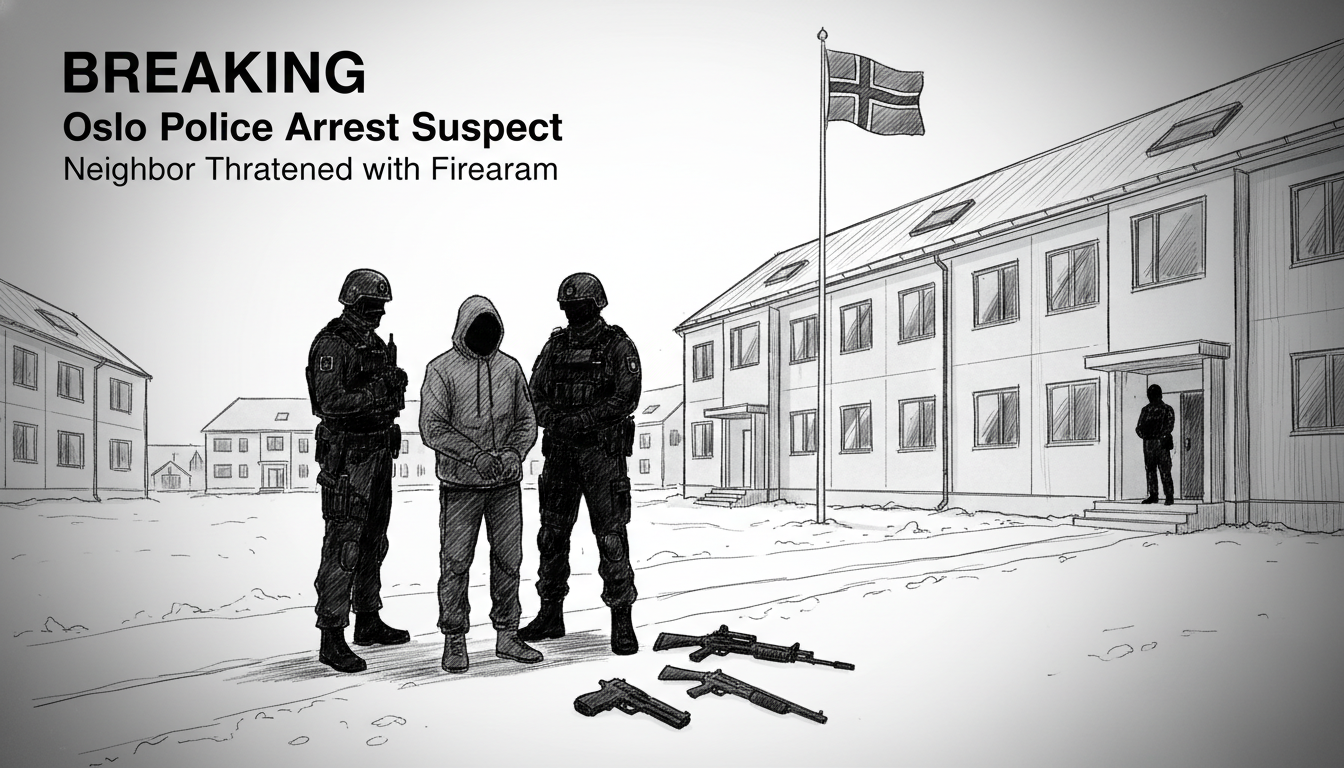Police in Oslo have arrested a suspect following a violent confrontation between neighbors in the Tveita district. A resident was threatened with a firearm by another resident in their apartment building. The incident occurred when the suspect knocked on the victim's door and brandished the weapon.
The victim managed to escape unharmed and sought help from authorities. Police operations leader Gabriel Langfeldt confirmed officers have control of the situation. Both the suspect and victim have been identified, and investigators confirm they had no prior relationship.
During the police response, officers discovered three weapons at the scene. Two of these weapons appeared to be gas-powered firearms. The suspect was apprehended and transported to police custody. Police have conducted searches of the apartment and are currently interviewing the victim.
Operations leader Tore Barstad stated that investigators remain uncertain about the motive behind the attack. He acknowledged the obvious threat situation but expressed uncertainty about the exact circumstances. Barstad confirmed the individuals were neighbors and that police were familiar with the suspect from previous encounters.
This incident highlights ongoing concerns about neighborhood safety in Oslo's residential areas. While Norway maintains relatively low crime rates compared to other European capitals, such confrontations between residents raise questions about community relations and conflict resolution mechanisms. The psychological impact on victims of such threats cannot be underestimated, as Barstad noted the clear trauma experienced by those exposed to the situation.
Police continue their investigation into the Oslo weapons incident, examining what prompted the confrontation between these neighbors. The case follows standard Norwegian police procedures for weapon-related threats, which typically involve thorough evidence collection and multiple witness interviews. Such incidents, while relatively rare in Norwegian residential areas, prompt important discussions about community safety measures and early intervention strategies for conflicts between residents.
Norwegian law enforcement maintains strict protocols for firearm-related incidents, given the country's generally restrictive gun laws. The discovery of multiple weapons in a residential setting will likely trigger additional investigation into how the suspect obtained these items. The case also raises questions about conflict resolution resources available to residents experiencing neighborhood disputes before they escalate to this level.
What consequences might the suspect face under Norwegian law? Firearm threats typically carry serious penalties, particularly when multiple weapons are involved. The judicial process will likely examine the suspect's history and the exact nature of the threat made against the victim. Meanwhile, support services would typically be offered to the affected resident following such a traumatic experience.

